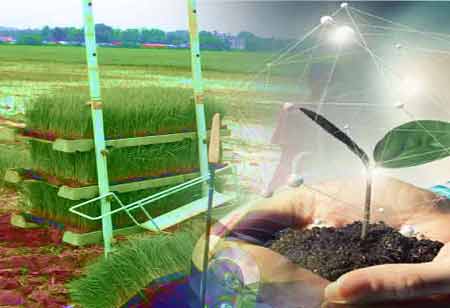Thank you for Subscribing to Agri Business Review Weekly Brief
Important Advantages Of Vertical Farming.
Vertical gardening is a farming method of growing crops in vertically stacked layers.

By
Agri Business Review | Thursday, November 10, 2022
Stay ahead of the industry with exclusive feature stories on the top companies, expert insights and the latest news delivered straight to your inbox. Subscribe today.
Vertical farming may be a bright future food source as space can effectively produce large amounts of vegetables and fruits.
FREMONT, CA: Vertical gardening is a farming method of growing crops in vertically stacked layers. Vertical farming may be a bright future food source as space can effectively produce large amounts of vegetables and fruits.
1. Stable crop yields
One major gain of vertical farming is that it guarantees quite firm crop yields.
If everything is organized perfectly, it is quite simple to forecast how much vegetables and fruits can be reaped in a given period.
Hence, it is easy to make a long-term agreement with grocery stores and suppliers as there will be a persistent supply of crops and income streams because of vertical gardening.
2. Protection from outside circumstances
With vertical farming, the plants are also shielded against adverse outside conditions.
For example, through outdoor farming, a high fraction of crops are lost every year because of droughts, floods, or storms.
Through vertical gardening, none of those severe weather conditions will issue as the inside conditions will not be changed because of those conditions, at least if those extreme weather events do not damage those vertical farming facilities.
Therefore, if the vertical farming system had been constructed stably, there is not be too much to worry about regarding adverse outside environmental conditions.
3. Crop produces all year long
Another crucial upside of vertical farming is that crops can be reaped annually.
Contrary to outdoor farming, where harvest time is just a few weeks or months, the crop produced from vertical gardening is much more persistent.
Hence, these stable crop yields all year long are quite suitable since they assure farmers that they will earn a constant income.
4. Protection against pests
Since vertical farming is usually operated indoors, there are also fewer chances to contaminate plants with several pests.
If the workers pay careful attention not to bring any pests inside, the possibilities are almost zero that pests can get inside the vertical farming system.
In turn, the absence of pests will increase crop yields since plants can grow optimally without being disturbed by pests.
5. Fewer crop losses
Generally, through vertical farming, far fewer crops are lost to pests and other negative circumstances compared to traditional outdoor farming.
This implies that crop yields with vertical farming will be greater and fewer crops will be lost during the cultivation process.
6. Increase in profits
As the conditions inside vertical farming systems can be improved specifically for the individual plants, chances are that also profits are maximized.
If plants can grow optimally, they can produce high yields, which also implies high profits for farmers who engage in this farming technique.
7. Capacity to grow all types of plants
As the conditions inside vertical gardening systems about humidity and lighting can be changed as desired, there is also the chance of growing quite exotic plant species that could not be grown through traditional outdoor farming.
This provides farmers greater flexibility to satisfy the demand of people concerning certain crops and may also raise their profits because of this high level of flexibility to adjust to the market.





